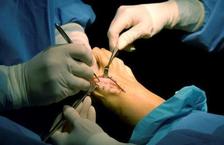A person clocks approximately 75,000 miles on their feet before the age of fifty. However, regular foot care is neither a priority among many people nor considered a significant aspect of overall body health. Uncomfortable foot sensations are often ignored or remedied by flexing feet muscles. Foot ailments, however, may indicate a systemic problem in the body. Proper and regular maintenance of the feet allows early detection and treatment of foot problems. Podiatrists are physicians who handle the lower leg region including the feet and ankle.
What does a podiatrist do?
A Podiatrist is a type of foot doctor who performs duties such as:
- Diagnosing foot conditions by examining the lower leg region, including the feet and ankles of a patient, and conducting the necessary lab tests or x-rays
- Treating foot ailments, disorders or injuries for example, arthritis, muscle and tendon ailments and skin disorders
- Performing surgeries on the lower leg regions to repair fractured bones or deformities
- Advising patients on proper foot care, preventive techniques, and warning signs of serious foot ailments
- Conducting tests to determine whether the foot disease results from a systemic problem, such as diabetes, and refer the patients to the relevant physicians
- Prescribing medications or instructions to improve mobility, for example, orthopedic shoes
- Developing and fitting prosthesis for patients with amputated legs
Qualifications
There are strict educational, training and licensing requirements to become a podiatrist. These include:
- Bachelor's degree in a science-related field. Coursework includes laboratory sciences, such as chemistry and biology
- Pass a Medical College Admission Test (MCAT) prior to enrolling to a Doctor of Podiatric Medicine (DPM) college
- Doctor of Podiatric Medicine (DPM) degree. It takes four years to complete this degree program. Coursework includes pathology, lower-extremity biomechanics, pharmacology, anatomy, and physiology
- 3-year podiatric medical and surgery residency training
- State license to practice podiatric medicine after passing the American Podiatric Medical Licensing Exam (APMLE). You must participate in continuing education for renewal of your practicing license
- Board certification either by the American Board of Podiatric Surgery or the American Board of Podiatric Medicine
Skills
There are particular valuable skills for podiatrists to have in their interactions with patients such as:
- Sharp analytical skills to effectively diagnose and treat feet ailments
- Good interpersonal and communication skills when dealing with the concerns of patients and prescribing the necessary treatment
- Show empathy when handling patients with painful ailments
Salary
The salary range of podiatrists depends with their position and place of work. Podiatrists working at physician offices and outpatient centers earn higher salaries. Those who specialize in wound care are also recorded as high earners.
|
Entry Level |
$72,320 |
|
Mid Career |
$116,898 |
|
Successful |
$200,178 |
Source: PayScale
The bonuses received by podiatrists are as high as $40,000 every year.
Work environment
Podiatrists work in hospitals, physician offices, and outpatient care centers. While some select to open their own practices, others work in group settings with other physicians. Podiatrists usually work on a full-time basis and may have to work nightshifts or weekends to cater for all their patients. Podiatrists generally report high job satisfaction.
Career prospects and job outlook
The growth rate for this industry is relatively high at 23% between 2012 and 2022. The growth of this job sector largely stems from the increase in population, and the aging populace. The high incidences of obesity and diabetes in America also contributes to an increase in foot problems and clientele. Employees in this job sector are relatively few, which gives them a wide range of employment opportunities.
If you have an interest in foot care and have the skills and attributes to study podiatric medicine then this could be the career for you!
Image: istock

